Every gardener dreads spotting the first mustard-hued fungal growth marring healthy garden beds. Yellow mold arising on the soil surface signals looming threats below of root and stem rot diseases that can quickly destroy treasured vegetable crops like tomatoes, peppers and legumes.
Left unchecked, the color rapidly spreads as plants succumb to deadly wilt fungi. Fortunately, through prompt integrated action, gardeners can rein in yellow mold and similar soil-borne scourges to nurture plants safely again.
This comprehensive guide arms garden warriors with knowledge for identifying common fungal pathogens plaguing soils along with the best organic and natural methods to eradicate current infestations plus prevent future assaults. Readers will gain insights into essential soil health principles and practices fostering disease resistance naturally for sustainable solutions.
What Is Yellow Mold?
Yellow mold refers to a subset of common soil-borne fungal illnesses attacking garden plants at the roots and lower stems, leading to dramatic wilting and plant death if left uncontrolled. While dozens of fungal strains exist, the majority of culprits behind the yellowing scourge fall under fusarium, rhizoctonia and verticillium species. The first indication is often bright lemon-yellow or orange fuzzy mold forming in patches on top of the soil or along lower leaves touching contaminated ground.

These fungi thrive in moist, compacted soils with acidic pH levels. As microscopic filaments called hyphae proliferate underground, the fungus invades root tissues and vascular channels, spreading up stems. Infection interrupts the plant’s circulatory system carrying nutrients and moisture, causing rapid wilting, yellowing leaves and often collapse within days or weeks of visible onset. All plants are susceptible, but nightshades like tomatoes, peppers, potatoes and eggplants are especially vulnerable to fusarium and verticillium wilts.
While diagnoses once meant certain doom for gardens, modern integrated practices combining sanitizing soil amendments, boosting overall plant vigor, proper crop rotating and other methods now provide organic, sustainable yellow mold control restoring botanical balance. Read on to discover the vital techniques savvy gardeners employ in combating these challenging soil-borne diseases.
Ways to Recognize Mold on Soil
Catching soil fungal outbreaks early allows gardeners to take prompt restorative action, but first yellow mold and related pathogens must be accurately identified. Look for these key signs of impending soil-borne crop danger to distinguish from look-alike nutrient deficiencies or other issues:
- Yellow or orange patches. Bright yellow, gold or orange colored fuzzy mold visible on the soil surface often signals fusarium fungus infection. As microbial masses gather strength below ground, carotenoid pigments color the mold growth on top, helping differentiate from green harmless soil algae. Yellow mold expands radially day by day as hyphae spread, infecting enlarging areas if left unchecked. These alarming skin-like patches clearly indicate serious fungal disease.
- Lower leaf yellowing. Once fusarium or verticillium fungi enter plant circulation through the roots, leaves progressively yellow from the base upward as wilt sets in. Leaf margins brown, curl and die back over ensuing days or weeks, contrasting upper green foliage still untouched. Declining health slowly advances until leaf loss and death occurs rapidly. Targeting lower water-conducting tissues, this symptom points toward soil-borne vascular diseases.
- Wilting foliage. Sudden, severe wilting with leaves flagging during peak sun hours hints at disrupted root function and insufficient water supply reaching stems and leaves. If soil remains moist while plants unexpectedly droop, yellow mold or other root afflictions likely compromise vascular flow instead of mere water needs. Severity worsens daily, leading to permanent wilt and shriveled vegetation if fungus wins.
- Stunted plants. Soil pathogens like verticillium wilt slow and eventually halt plant growth entirely by strangling vascular tissues. Infected plants stall in development, appearing stunted compared to neighbors in beds. Poor fruiting often accompanies dwarfing along with yellowed lower foliage indicating soil sickness reaching upper branches through the xylem and phloem channels. Take rapid action to resolve infestations before lasting reversals occur.
- Mushroom circles. Another red flag is the prototypical “fairy ring” pattern when mushrooms unexpectedly sprout in circular formations expanding outwards season after season. These visible fruiting structures provide outlets for underground fungal colonies to emit spores in the millions, worsening infestations. Rings often first emerge during damp periods on lawns but also invade garden beds with disastrous impacts to plant health.
- Rotten roots or stems. Dig up shrinking infected plants to inspect roots for light brown softening or discoloration instead of crisp white fibers and feeder root hairs. Sniff for foul odors indicating decay. Slice stems and roots further, checking if internal vascular rings appear darkened or mushy from clogs, halting moisture flow. Bad smells and textures show fatal infections in progress.
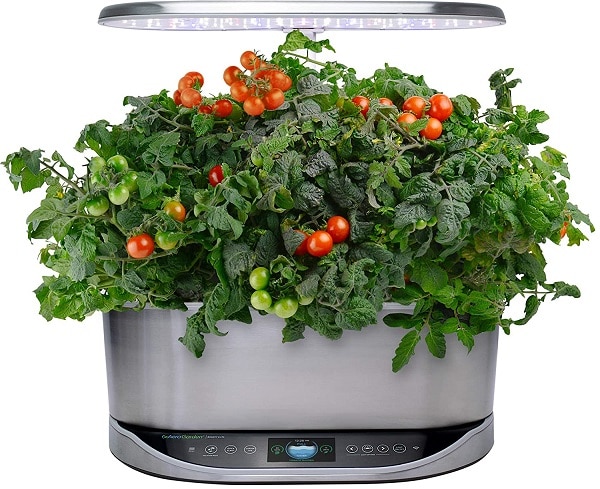
 AeroGarden Bounty Elite - Indoor Garden with LED Grow Light
AeroGarden Bounty Elite - Indoor Garden with LED Grow Light
- WiFi and Alexa Compatible, Stainless Steel Grow up to 9 plants, up to 24duim
- Includes everything you need to grow
- 50 watt LED Grow Lights, perfect spectrum for fast growth & big harvests
Why Does Yellow Mold Appear in The Soil?
Seeing bright yellow or orange fungal growth blooming on formerly rich garden soil certainly raises alarms. But what factors actually allow organisms like fusarium and verticillium to transform from benign natural decomposers into devastating plant pathogens? Understanding the origins of soil-borne crop diseases provides critical clues for prevention and permanent solutions.

Infected Soil
Yellow mold can appear in soil that has become infected with fungal spores. These spores may have blown in on the wind, been brought in by insects, or been present in contaminated tools, pots, or soil. When conditions are right, the spores germinate and yellow mold begins to grow. High moisture levels in the soil create an ideal environment for fungal growth.
If soil shows signs of yellow mold, it is best to remove and discard the infected areas. The remaining soil can be treated with a fungicide drench to kill any lingering spores. It is also important to identify and address the moisture issue that enabled the mold growth in the first place. Proper watering practices and drainage can help prevent future outbreaks.
Water Overload
Excess moisture is one of the leading causes of yellow mold growth in soil. When soil is overwatered, water logs the spaces between soil particles where air should be present. This creates an anaerobic environment lacking in oxygen, which favors fungal growth.
In soggy soil, roots also suffer due to a lack of air. This stress makes plants more vulnerable to fungal diseases like yellow mold. Allowing the soil to dry adequately between waterings can prevent moisture overload. Using pots with drainage holes and well-draining soil mixes can also help soil avoid becoming waterlogged.
Contaminated Fertilizers
The nutrients in fertilizers feed plants, but can also feed yellow mold. Contaminated organic fertilizers like compost or manure often contain mold spores that get introduced to the soil. Inorganic fertilizers usually don’t contain spores, but can still enable fungal growth.
High nitrogen fertilizers acidify soil over time, especially when overapplied. Acidic soil provides ideal conditions for fungi like yellow mold to thrive. When applying any fertilizer, it’s important to follow manufacturer instructions to prevent nutrient imbalances. Testing soil pH annually and amending soil as needed can also help control mold supporting acidity. Using clean, uncontaminated amendments is key.
Low Light Environment
Yellow mold fungi prefer shaded, low light environments. If overgrown trees, shrubs, or structures begin heavily shading an area that once received full sun, yellow mold growth may occur. The reduction in sunlight limits air circulation and allows moisture levels in soil to remain higher.
Pruning back encroaching vegetation to open up the area can help solve low light issues. For areas with dense shade that cannot be thinned, choosing shade-tolerant plants that resist fungal diseases is advised. Seeking disease-resistant cultivars of favorite plant varieties suitable for shady zones can also prevent yellow mold problems.
Waterlogged Soil
Soil that remains waterlogged for prolonged periods of time tends to develop fungal growths like yellow mold. When pore spaces between soil particles become saturated by excess moisture, oxygen is pushed out. This anaerobic, low oxygen environment gives fungi an advantage over healthy soil microbes.
Improving drainage in chronically wet areas can help control yellow mold. Simple solutions include building raised garden beds, incorporating organic material like bark chips to loosen heavy soils, or installing French drains to divert excess moisture. Plants suited to drier conditions should also replace any moisture loving varieties poorly adapted to the environment.
Lack of Sunlight
Insufficient sunlight exposure can also contribute to yellow mold in soil. Shade cast from buildings, trees and shrubs limits light penetration. This causes humidity levels to rise and soil to remain damp for longer periods of time after rains or irrigation.
The dampness paired with low light gives yellow mold fungi an environment conducive to rapid spread. Pruning back encroaching trees/shrubs to open up the area or filtering shade with solarize fabric can help counter lack of sunlight issues. Choosing plants appropriately adapted for shade may also be necessary in some low light garden areas.

 AeroGarden Red Heirloom Cherry Tomato Seed Pod Kit for AeroGarden
AeroGarden Red Heirloom Cherry Tomato Seed Pod Kit for AeroGarden
- Hydroponic Indoor Garden, 6-Pod
- GERMINATION GUARANTEE, COMES WITH EVERYTHINGб Non-GMO seeds; No herbicides; No pesticides
- WORKS WITH ANY AEROGARDEN
How to Get Rid of Yellow Mold in Soil?
Once yellow mold has taken hold in your garden soil, eradicating it requires concerted effort. Getting rid of this persistent fungus is crucial for protecting the health of your plants. With the right cultural practices and amendments, yellow mold can be effectively banished from the soil and future outbreaks prevented. The solutions covered below provide a multifaceted approach to ridding soil of yellow mold for good.

Clear Away Organic Matter
Removing infected garden debris can eliminate shelters for yellow mold spores. Carefully lift away any mulch, dead leaves, stems or surface plant debris surrounding areas with yellow mold growth. Be sure to clean any gardening tools or gloves afterward with diluted bleach to prevent spreading spores further.
Discard all harvested organic matter in sealed bags with household trash, not the compost pile. Rake soil gently to disrupt any shallow mycelium networks. Topping the turned soil with fresh, sterile bagged mulch or compost helps suppress spore germination. Monitor the area’s moisture levels and only water early in the day to allow the soil to dry.
Repot the Plant
If yellow mold is concentrated on a garden plant’s roots, repotting with fresh, sterile soil may be necessary. Carefully remove the plant from its pot and gently shake or rinse away as much soil as possible from the root ball. Prune off any visibly diseased roots as well.
Repot the plant in a clean container using new, high quality commercial potting mix. Be sure the pot has drainage holes to prevent future moisture issues. Water sparingly after repotting to help the plant recover. Apply compost tea or microbial soil inoculants to restore beneficial microbiome diversity lost through sterilization.
Enlist Nature’s Help with Natural Fungicides
Certain organic compounds have antifungal properties that inhibit troublesome soil fungi like yellow mold naturally. By incorporating sources of these antifungal compounds into soil, yellow mold growth can be suppressed without using harsh synthetic chemicals.
Common antifungal amendments include cornmeal, crushed mustard seeds, crushed garlic cloves or onion bulbs, hydrogen peroxide and white vinegar. These can be mixed into affected soil or diluted as liquid drenches. Concoctions of various herbal essential oils have also proven effective against fungal growth, as have microbial inoculants containing beneficial Trichoderma fungi species.
Use Commercial Fertilizers
Specialized commercial fungicide products can also tackle yellow mold issues. Broad spectrum fungicides containing active ingredients like thiophanate-methyl, mancozeb or chlorothalonil target a variety of fungal diseases. Always closely follow label application directions based on location and affected plant species.
Fertilizers containing phosphites have also shown efficacy against phytopthora fungal species and may help suppress yellow mold fungi. Maintain regular fertilization when using fungicides to strengthen plant health. Combining chemical interventions with cultural practices like proper watering and pruning is key for resolving fungal problems long term.
Repot the Entire Soil
In severe yellow mold cases, repotting or replacing all potted plants’ soil may be necessary. This is especially important for botanical collections vulnerable to losing numerous plants if one pot’s soil infects the rest. Remove each plant, check roots for issues, prune as needed and repot in sterile commercial mix.
Group repotting lets you rearrange plants that might contribute to fungal-friendly conditions for one another as well. Place those requiring less water further from sprinkler coverage, and move susceptible varieties into better lit or less cramped spaces with airflow. Take the opportunity to thoroughly clean pots before replanting.
Improve Watering
Fixing improper watering is critical when battling yellow mold. Analyze your current irrigation practices to identify ways to enhance drainage, decrease frequency, improve distribution and avoid leaves staying wet for prolonged periods.
Installing drip irrigation, using soaker hoses, or watering at the soil line using water wands are always to limit leaf wetness compared to overhead sprinklers. Be sure to deeply water early in the morning, so moisture has time to permeate soil and dry, rather than remaining on the surface overnight. Infrequent deep watering also encourages deeper rooting, leading to healthier plants.
Is Yellow Mold Dangerous?
Yellow mold growing in soil can certainly cause damage, but the degree of danger depends on the specific species as well as which organisms are exposed. Several different genera of fungi display bright yellow fungal growth in conditions like compacted soil, garden debris mulch, and overly damp peat or wood chips. While aesthetic and plant health nuisances, most yellow molds are not hazardous if proper precautions are taken.

The most ubiquitous yellow mold genus is Aspergillus. Aspergillus species thrive in warm, humid environments. Some release toxic compounds or allergic spores, but most are commonplace without severe health risks. However, A. fumigatus can cause dangerous sinus and lung infections if inhaled by people with compromised immune systems.
Another potential yellow mold is Phoma herbarium in the Dematiaceae family. Phoma releases air and skin-irritating spirotoxins and can be toxic if consumed. It’s considered pathogenic and capable of infecting garden plants plus animals if conditions favor growth. Similar Leptosphaeria species are also phytopathogenic, harming plant health.
Fusarium oxysporum, a particularly destructive fungal species, displays yellow mold growth at times. Fusarium devastates vegetable crops and ornamentals by entering root tissue and choking off water supply. For gardeners, quick Fusarium identification and eradication is vital to avoid major losses. Comprehensive fungicide treatment combined with rotation of disease-resistant species in subsequent seasons is the best prevention.
So while most common yellow molds in soil pose minimal health hazards with routine exposure, exceptions like Fusarium and certain Aspergillus species do require diligent precautions. Any indication of infection in human or animals warrants medical attention. Protective equipment when handling contaminated soil is also advised for vulnerable populations. However, straightforward soil treatment and proper cultural practices limit most yellow molds to just being pesky plant pathogens rather than dangerously toxic risks.
How to Prevent Future Yellow Mold Growth?
Once yellow mold takes over garden soil, it can easily return year after year if conditions continue favoring fungal growth. That’s why prevention focused on cultural practices that discourage mold development long-term is so important.
Alongside eradication methods, proactively taking steps to create soil environments hostile to yellow mold establishment prevents season after season of frustration battling back recurrent infections. The preventative actions below help break mold-promoting cycles for good.
Effective Soil Percolation
Preventing yellow mold means routinely clearing away the fungus’ main food source — decaying organic matter. Remove fallen foliage, straw mulch, wood chip accumulation and dead plant material around garden beds monthly. Anything lingering on the soil surface potentially harbors mold spores or mycelium networks primed to exploit fresh nutrients.
Dispose of debris in sealed bags, never the compost pile. Monitoring moisture is also key — only water when essential and avoid wetting foliage. Letting beds dry adequately before soaking again helps control humidity, as does spacing plants for maximal airflow. Consistently managing decaying matter deprives yellow mold fungi of the elements they depend on to thrive.
Sun’s Sanitizing Effects
Uprooting container specimens at the first sign of fungus provides protection against rapid yellow mold reinfection. Carefully shake soil from roots and discard along with the original potting mix. Thoroughly clean the empty pots since insect eggs, spores and organic waste often hide in crevices, spreading contamination.
Repot trimmed root balls in fresh commercial soil mix. Choose lightweight blends amended with vermiculite or perlite to resist compaction and drainage issues. Maintaining proper potting procedures safeguards reprinted plants while halting young infestations before extensive soil treatment becomes necessary.
Unrestricted Air Flow
Incorporating organic matter with antifungal qualities into beds annually can prevent yellow mold from ever gaining momentum. Certain plant derivatives and microbes hinder fungi competing for nutrients and space. For example, scattering crushed corncobs, horsetail fern fronds, crushed mustard seed or aged hardwood bark introduces naturally occurring fungicidal compounds as they decompose.
Beneficial biofungicides and mycorrhizae also protect. Trichoderma fungi species attack pathogens and boost plant immunity. Products containing microbial mixes diversify the soil biome, improve fertility and make conditions unfavorable for mold development. Routinely cultivating allies against yellow mold fungi helps good guys win, occupying niche space first.

 AeroGarden Farm 24Plus with Salad Bar Seed Pod Kit - Indoor Garden with LED Grow Light, Black
AeroGarden Farm 24Plus with Salad Bar Seed Pod Kit - Indoor Garden with LED Grow Light, Black
- Indoor Garden with LED Grow Light, Black, Automatic timer makes sure the lights go on and off
- Adjustable grow height of 24Inch, and can be stacked with other Farm gardens
- Includes two Salad Bar Seed Pod Kits, featuring 9 lettuce pods, 3 herb pods, and 12 tomato pods
FAQ
Can proper soil aeration prevent yellow mold growth?
Yes, ensuring adequate soil oxygen circulation through proper aeration significantly reduces the risk of fungal diseases like yellow mold or fusarium wilt infecting plants. Techniques like raising garden beds, double digging to loosen subsurface compaction, mixing in sand or perlite, and avoiding excessive waterlogging allows air to permeate soil. These conditions prevent anaerobic pockets where excess moisture allows fungus and other pathogens to proliferate.
How long does soil remain contaminated once infected with fungal disease?
Garden beds infected with fungal pathogens like fusarium or verticillium wilt can pose disease risks for 2 to 4 years after initial contamination occurred. Yellow mold spores persist through soil for multiple seasons until removed by solarization heating, peroxide treatment or replacing all growing medium. To avoid transferring stubborn soil-borne illnesses, avoid planting nightshade vegetables like peppers, tomatoes or eggplant in affected areas without fully remediating.
Is it safe to reuse potting soil or garden beds once impacted by damping-off diseases?
No, reusing unsterilized soil carrying pathogens responsible for seedling death poses major risks of repeated damping-off outbreaks. The fungal spores embed deeply in soil and plant matter causing root rot, stem collapse and related damping-off syndromes attacking young plants. Either solarize garden beds or container mix until fully sanitized of the infestation, or discard and replace with fresh, sterile planting medium instead to prevent perpetuating deadly diseases.
HWhat techniques eradicate soil fungus to allow safe planting again?
Solarization using clear plastic mulch for 8+ weeks over moist garden soil effectively heats top layers enough to kill most fungal pathogens, nematodes and weed seeds for safe replanting. Mix granular calcium/sodium percarbonate into affected garden beds, which chemically disinfects as it breaks down. Or amend beds repeatedly with quality compost, introducing beneficial microbes that outcompete disease-causing fungus and rebalance soil health naturally over one to two seasons.
Does verticillium wilt impact all nightshade crops equally?
No, tomato and potato plants tend to suffer most severely from verticillium and other wilts compared to peppers and eggplants which may tolerate low pathogen levels. However, crop rotation remains vital since the soil-dwelling microbes can still infect all nightshade family vegetables at certain populations. Formulate a 3-4 year rotation schedule, avoiding back-to-back solanaceous plants in the same beds, along with implementing integrated soil remediation for best prevention.
How do healthy soil conditions act as the first disease defense?
Enrich garden beds with ample organic matter like aged manure, leaf compost and lignin which fosters overall soil balance and vigor. Test drainage, nutrient and pH levels, correcting unfavorable conditions stunting plant performance. Boost biodiversity and populations of beneficial bacteria plus mycorrhizae, which strengthen roots and prompt plant mechanisms fighting soil diseases. Follow basic soil care steps and in turn your peppers enjoy reinforced immunity naturally thwarting infections.

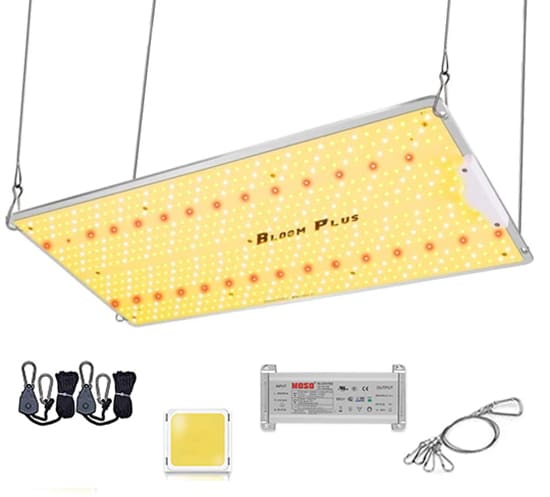 BLOOM PLUS LED Grow Lights, BP 2500W 2X4ft Coverage Grow Light Use with 646packs Samsung Diodes(Includes IR)
BLOOM PLUS LED Grow Lights, BP 2500W 2X4ft Coverage Grow Light Use with 646packs Samsung Diodes(Includes IR)
- For Indoor Hydroponic Plants Seeding Veg and Bloom
- Dimmable Sunlike Full Spectrum Plant Grow Lights
- 30-day money-back guarantee and a trusted 3 years warranty
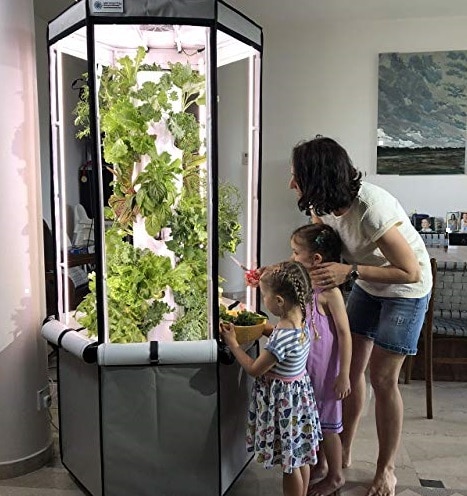
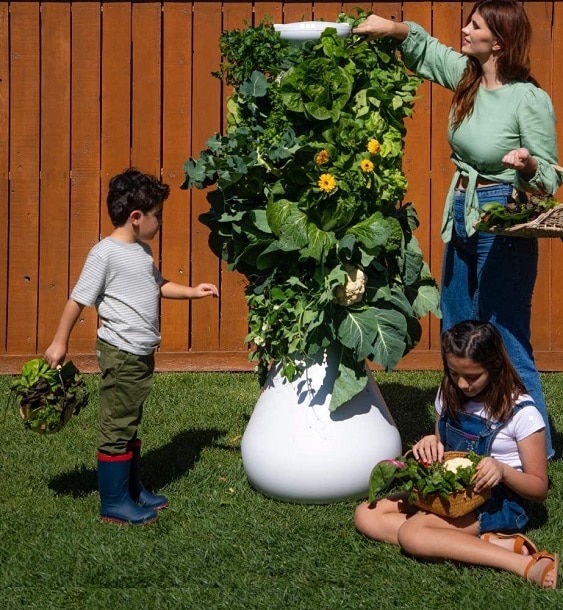
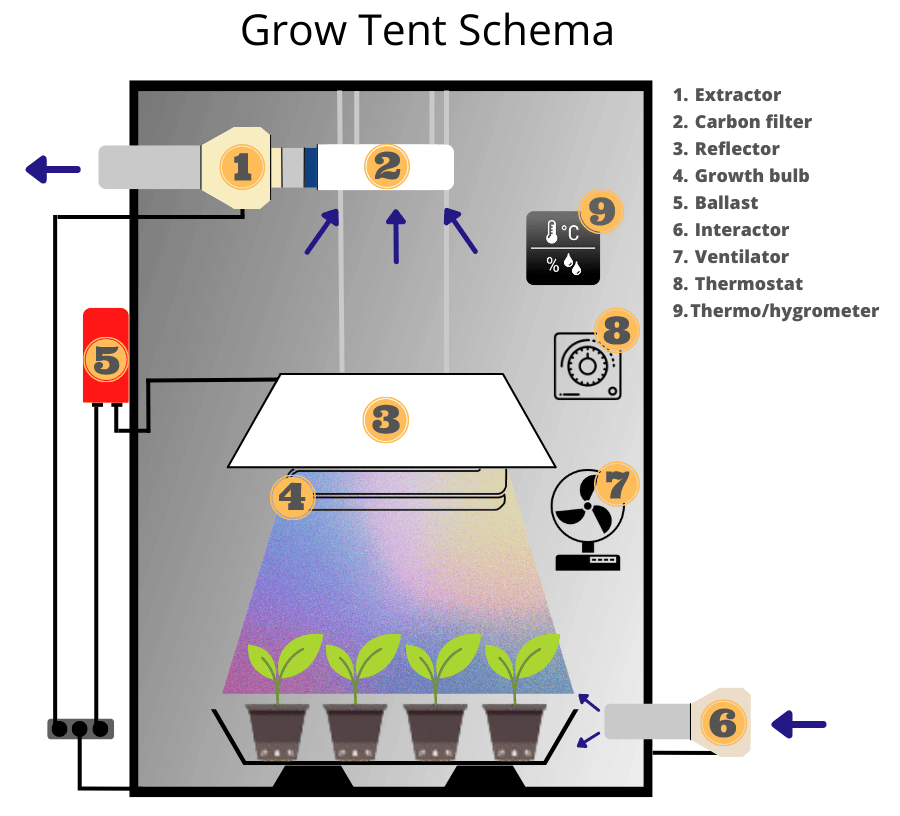
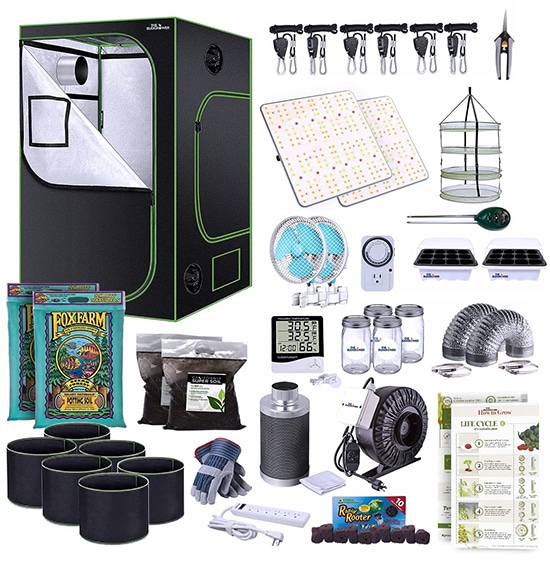
Leave a Reply